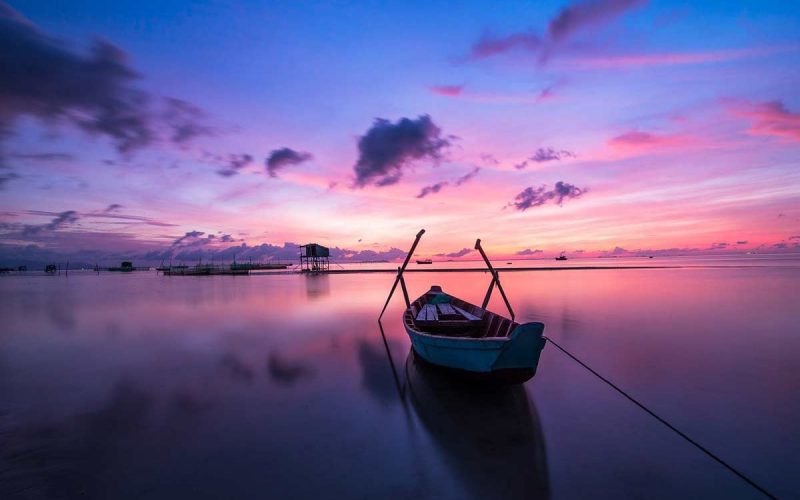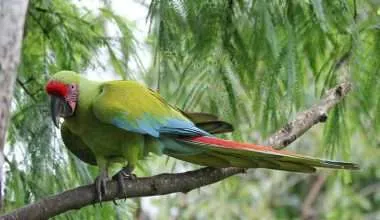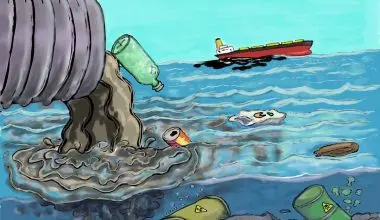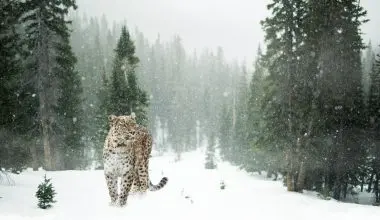Table of Contents Show
At the top of mountains, on plains or near the sea; there are so many different and fascinating lakes around the world.
Some man made and some natural, all lakes have their own story as they vary in shape, volume, size, and more, which makes visiting lakes truly an adventure!
Bucket list essentials for many (and should be for you too!), let’s take a look at some of the most amazing largest lakes in the world.
These lakes are a calming sight and beautiful and magnificent water bodies.
Largest Lakes of the World
These largest lakes have been ranked by their area. For ranking by volume, please skip to the end of the article to get to know more about it.
1. The Caspian Sea
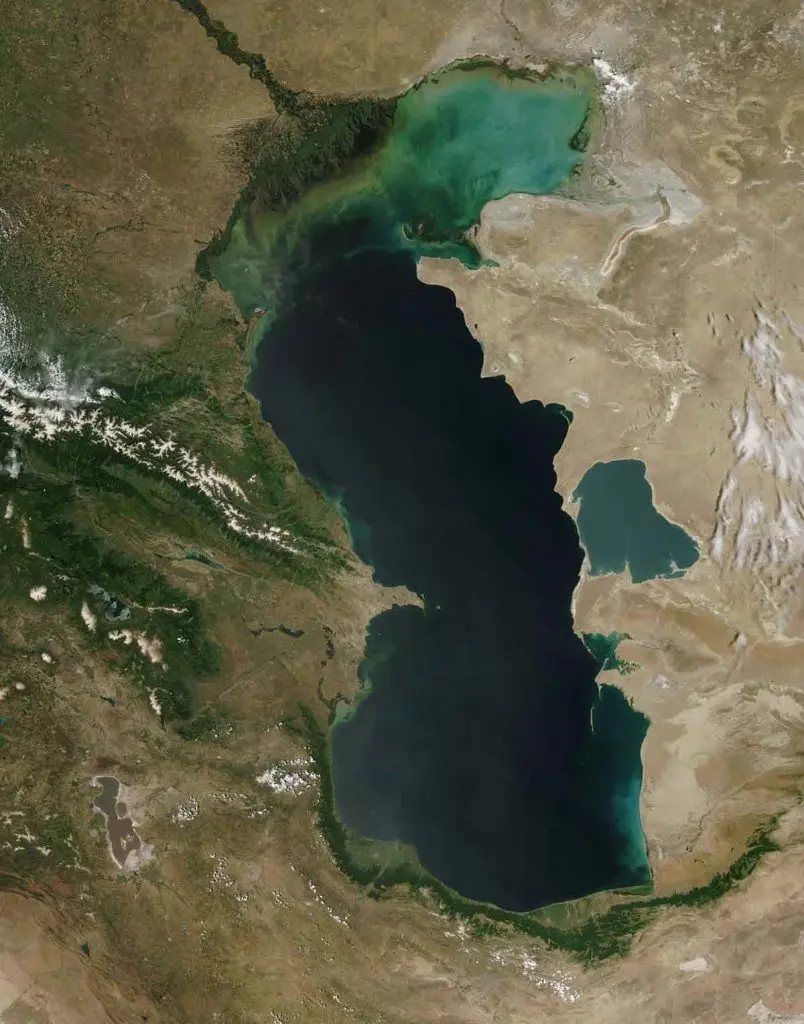
More commonly known to most as the Caspian Sea, the Caspian Sea is actually a lake! This is because it is landlocked water body and its shoreline borders five different countries.
Situated between the continents of Asia and Europe, the Caspian Sea is encircled by Russia, Kazakhstan, Azerbaijan, and Turkmenistan.
This is the largest lake in the world and sits at 28 m below sea level, with a total area of 371,000 square kilometers. Divided into three regions; the Northern, Middle and Southern Caspian – this lake dates back over 5.5 million years!
Holding just one percent of its total volume, the Northern Caspian is quite shallow. The Southern region of the lake is the deepest and comparatively warmer to the rest, making it the hub of visitors and a tourist destination.
Amusingly, the lake is not fresh water. It was termed a sea by the Romans because of its saltiness.
It is partly salty, only one-third as salty as seawater. This is because it once formed part of the old Paratethys Sea.
Nowadays, the sea is distinguished for its incredible caviar and oil industry.
The Caspian was connected to the world ocean through the Black Sea, Mediterranean Sea, and the Sea of Azov, some eleven million years ago. It is a salt lake that is about thirty percent as salty as the ocean. It varies in levels of salinity. The water is freshest in the north and saltiest in the south.
The Caspian Sea also shows varying levels of salinity. Overall, it is about one-third as salty as the ocean. The water is saltiest in the south and freshest in the north.
2. Lake Superior
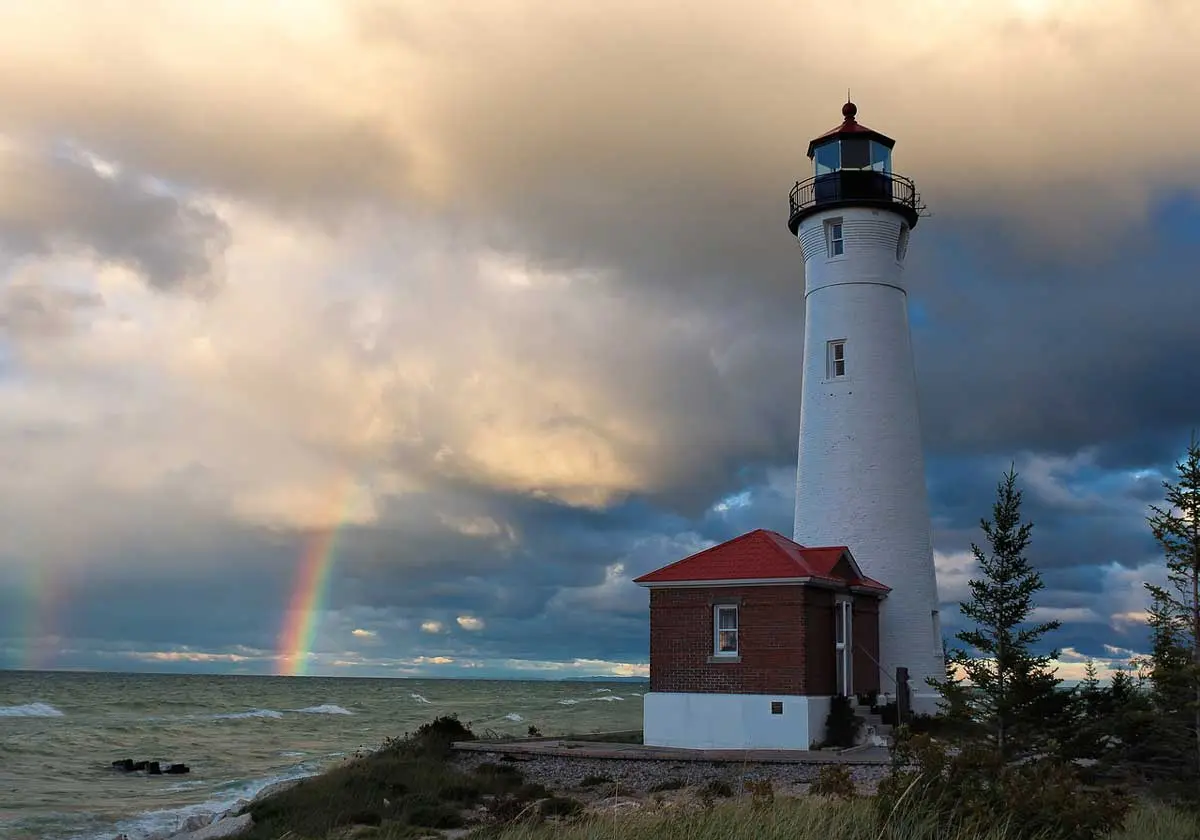
The largest lake in North America, and also the largest freshwater lake in the world, Lake Superior can be found in Ontario, Canada and several US states such as Wisconsin, Michigan, and Minnesota.
Sitting at 183 m above sea level, the surface area of the lake is 82,100 square kilometers. The lake is home to many scenic and charming views for tourists; like islands within the lake, recreational areas, picturesque roads as well as the Kakabeka Falls, an aquarium, and the gorgeous Presque Isle Park.
Lake Urmia held the title of the second largest lake in the world some years ago. The great salt lake in Iran shrank ten times in the area after 2014. It is consumed by red algae with decreased water volume and massive salt content.
3. Lake Victoria
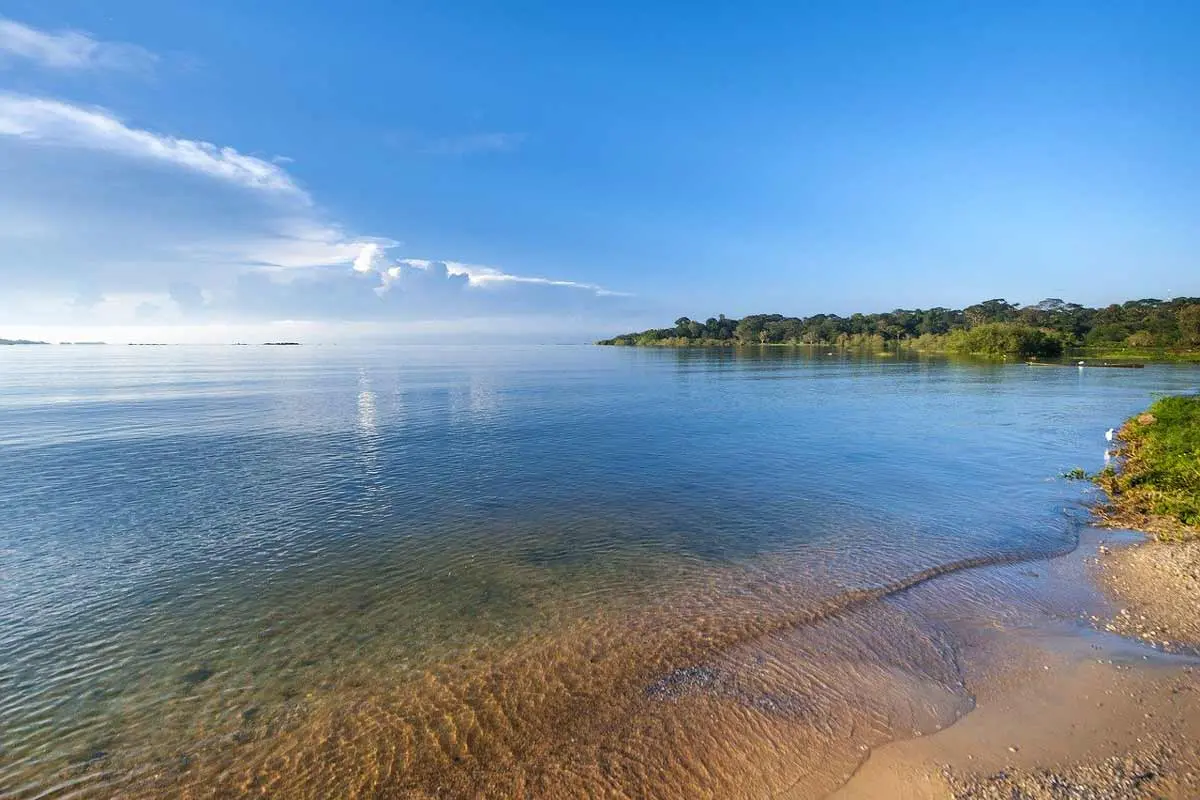
Largest of the African Great Lakes, at 68,870 square kilometers; Lake Victoria is the third biggest lake on the planet.
It is the world’s largest tropical lake too, getting most of its water from precipitation and small streams. 49% of the lake sits within Tanzania, while 45% is in Uganda. Only 6% is in Kenya.
Apart from one that is located in Kenya, all the other 85 different islands within the lake are found in its Ugandan part.
Lake Victoria is renowned for its amazing wildlife, specifically the cichlid fish and other rare species such as the deepwater catfish.
Other animals that reside around the lake consist of otters, hippos, turtles, crocodiles and mongoose.
4. Lake Huron
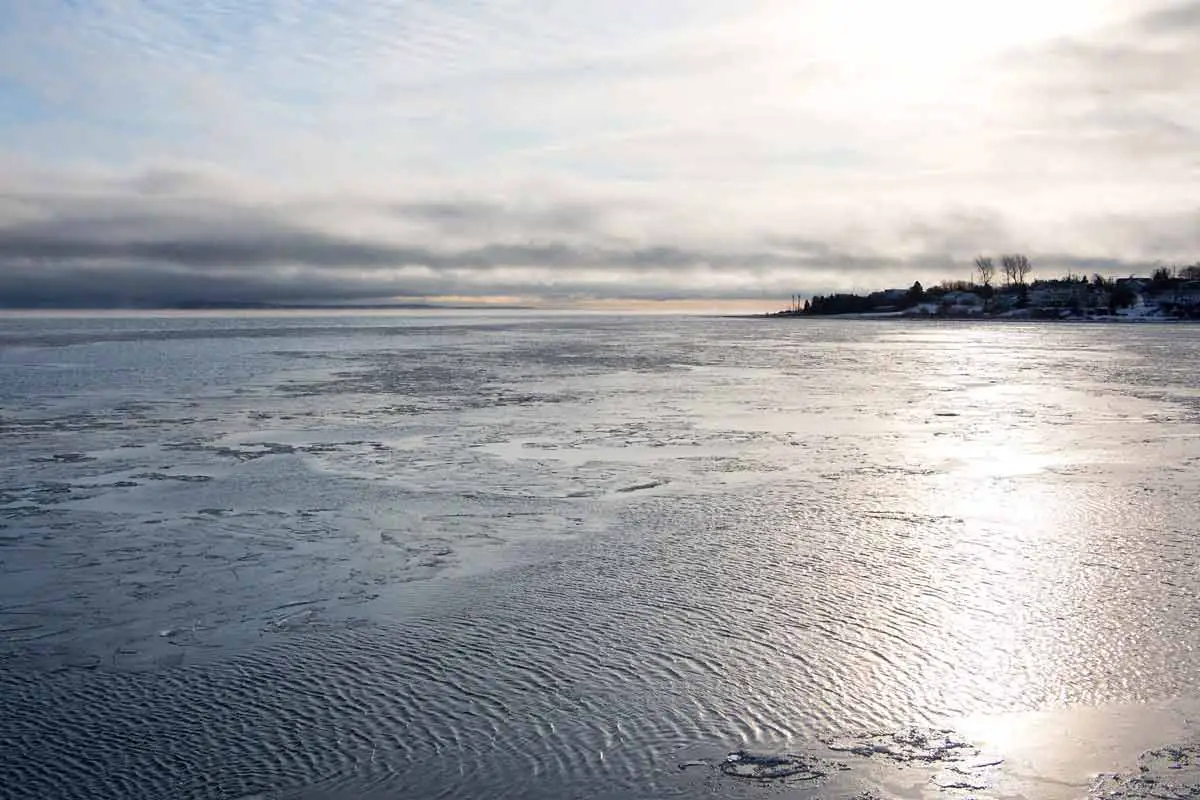
One of the Great Lakes of Canada, Lake Huron, sits within Ontario and the American state of Michigan. It is a popular summer destination, with a lot of people owning homes along the lake’s shoreline or some of its islands.
Ontario holds more than half of the lake’s 59,600 square kilometer surface area and is also home to Manitoulin Island – the world’s largest lake island. The Manitoulin Island is a popular tourist spot.
There are many other sightseeing destinations that are found along the lake’s shoreline, like the Goderich Wasaga Beach, Port Huron and Sauble Beach. Other must-see spots include National Marine Sanctuary, Mackinac Bridge and Bruce Peninsula National Park.
The Aral Sea used to be the fourth-largest lake in the world some decades ago. It has now dried up due to excessive irrigation and is a tenth of its size. It surrounds the border between Uzbekistan and Kazakhastan on the world map.
Before we go ahead, here’s a satellite image of Great Lakes in USA and Canada.
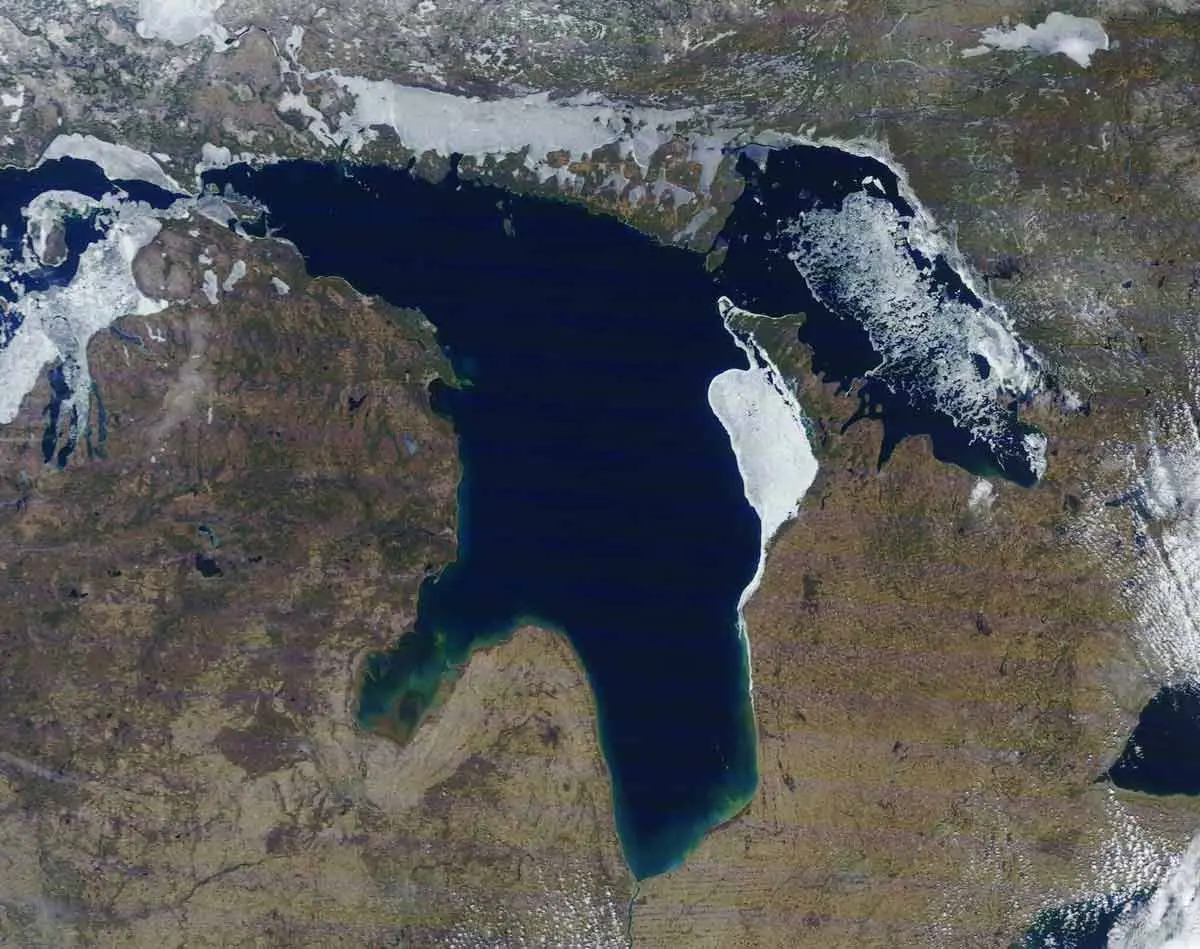
5. Lake Michigan
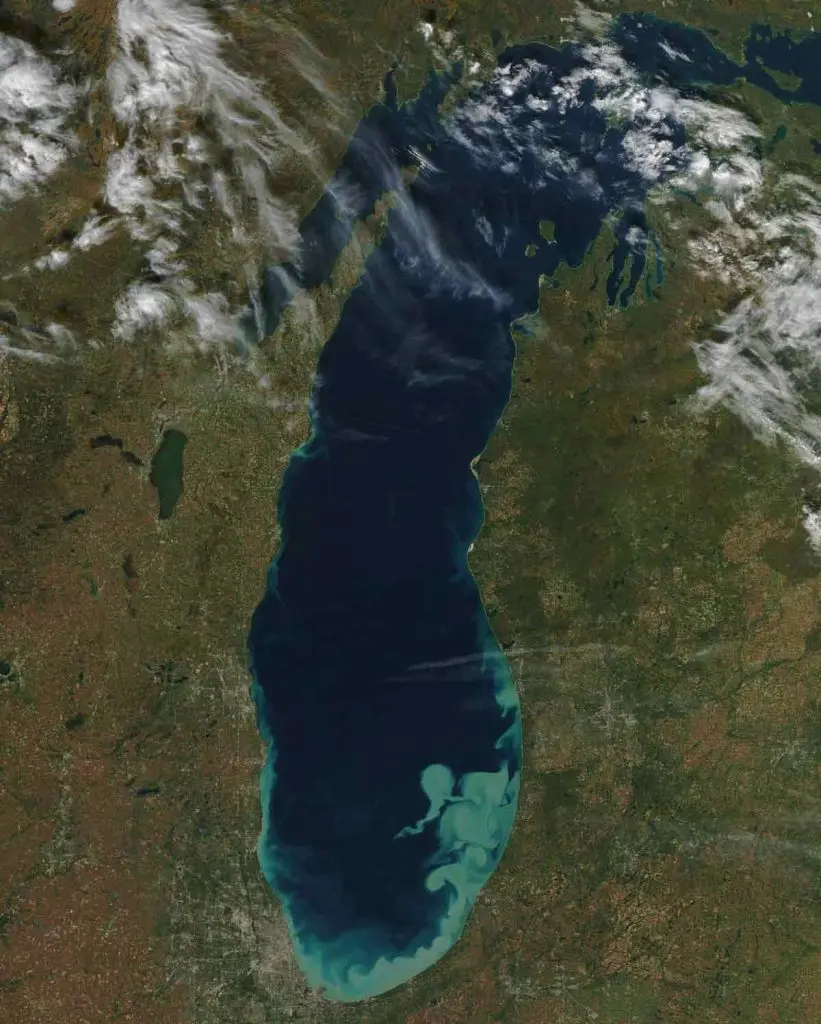
Lake Michigan is the fifth largest lake on the globe and is the third largest of the Great Lakes in USA.
Stretching for nearly 500 kilometers across four states, namely; Wisconsin, Illinois, Indiana and Michigan, the lake is a significant transport channel.
It also has the biggest port along its shoreline: the Port of Chicago. Due to the many beaches, boats and recreational activities, tourism is one of the main industries at Lake Michigan.
Adding to the long list of beaches, the lake has numerous islands, lighthouses, parks and is also a popular destination for sport-fishing trout, salmon, smelt etc.
6. Lake Tanganyika
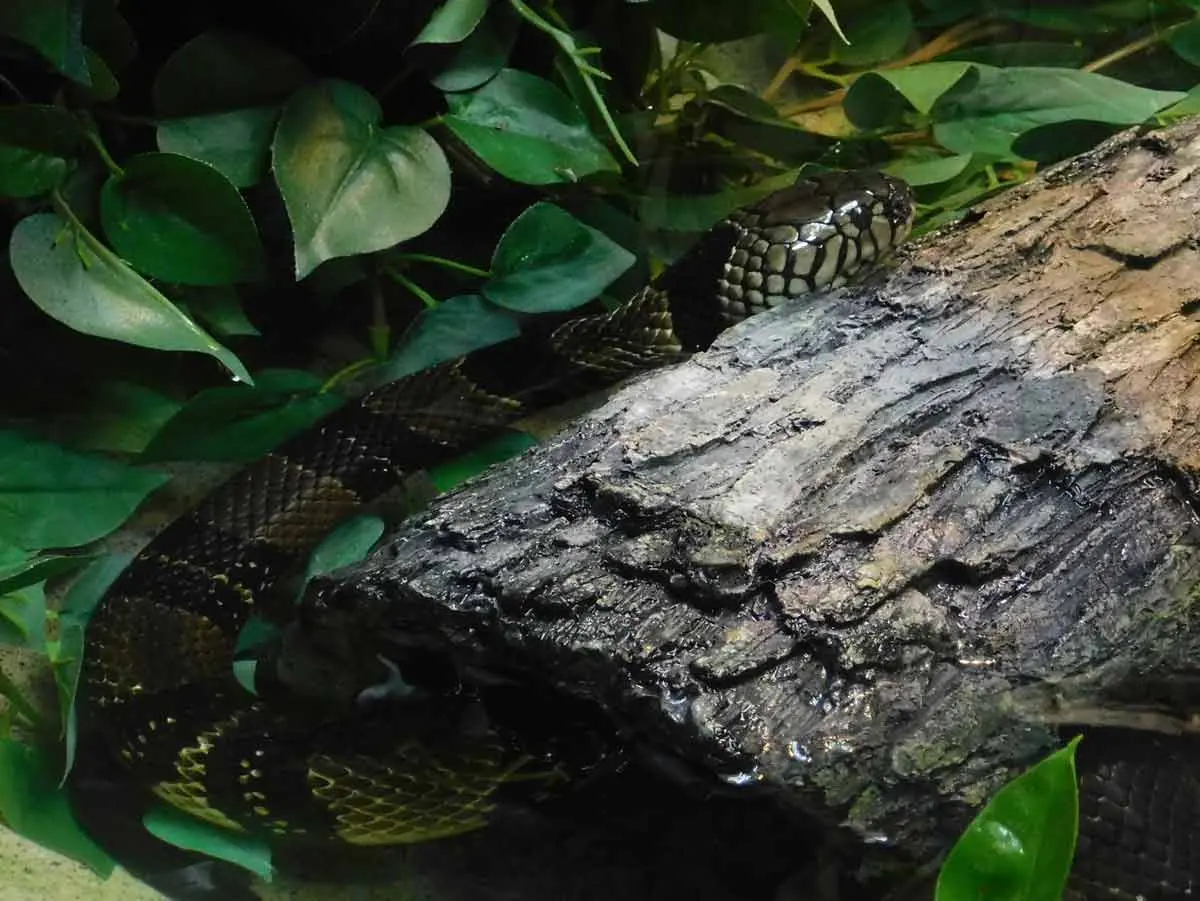
This is the second oldest freshwater lake and the world’s lengthiest freshwater lake. Lake Tanganyika is bordered by mountains and valleys and sits at 773 metres above sea level.
More than 85% of the of the lake is in Tanzania and DR Congo, with water released into the second longest river in the world, Congo, and the Atlantic Ocean.
Tanganyika also contains several islands, including Mutondwe Island, Milima Island and Kavala Island.
Apart from being one of the largest freshwater lake, it is also habitat to the endangered storm’s water cobra (Naja Annulata) that is found on its rocky shoreline. This cobra is found nowhere else in the world.
The lake is also home to Nile crocodiles, in addition to around 80 other fish species, some of which are native.
7. Lake Baikal
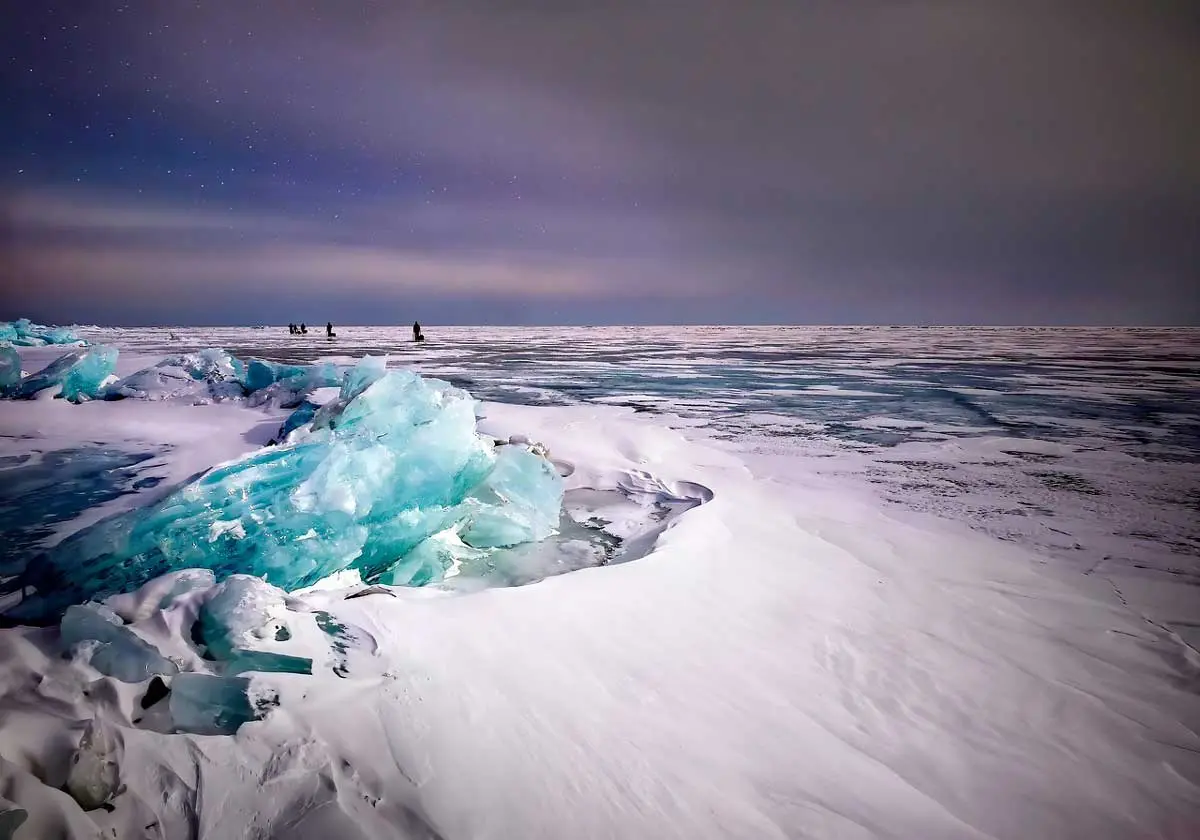
Lake Baikal is the deepest lake in the world, and is one of the largest freshwater lakes in the world by volume.
The lake dates back an astonishing 25-30 million years, making it the world’s oldest lake and also a UNESCO World Heritage Site.
The whole lake is encircled by mountains. On its eastern side you’ll find the Buryat tribes, who live on the lake’s biggest island; Olkhon Island.
The island is also the world’s fourth biggest lake-bound island.
Lake Baikal is 455 meters above sea level and is home to a 1,000 species of flora and 2,500 species of fauna. One of the must-see animals is the Baikal seal – one of only three freshwater seal species on the planet.
8. Great Bear Lake
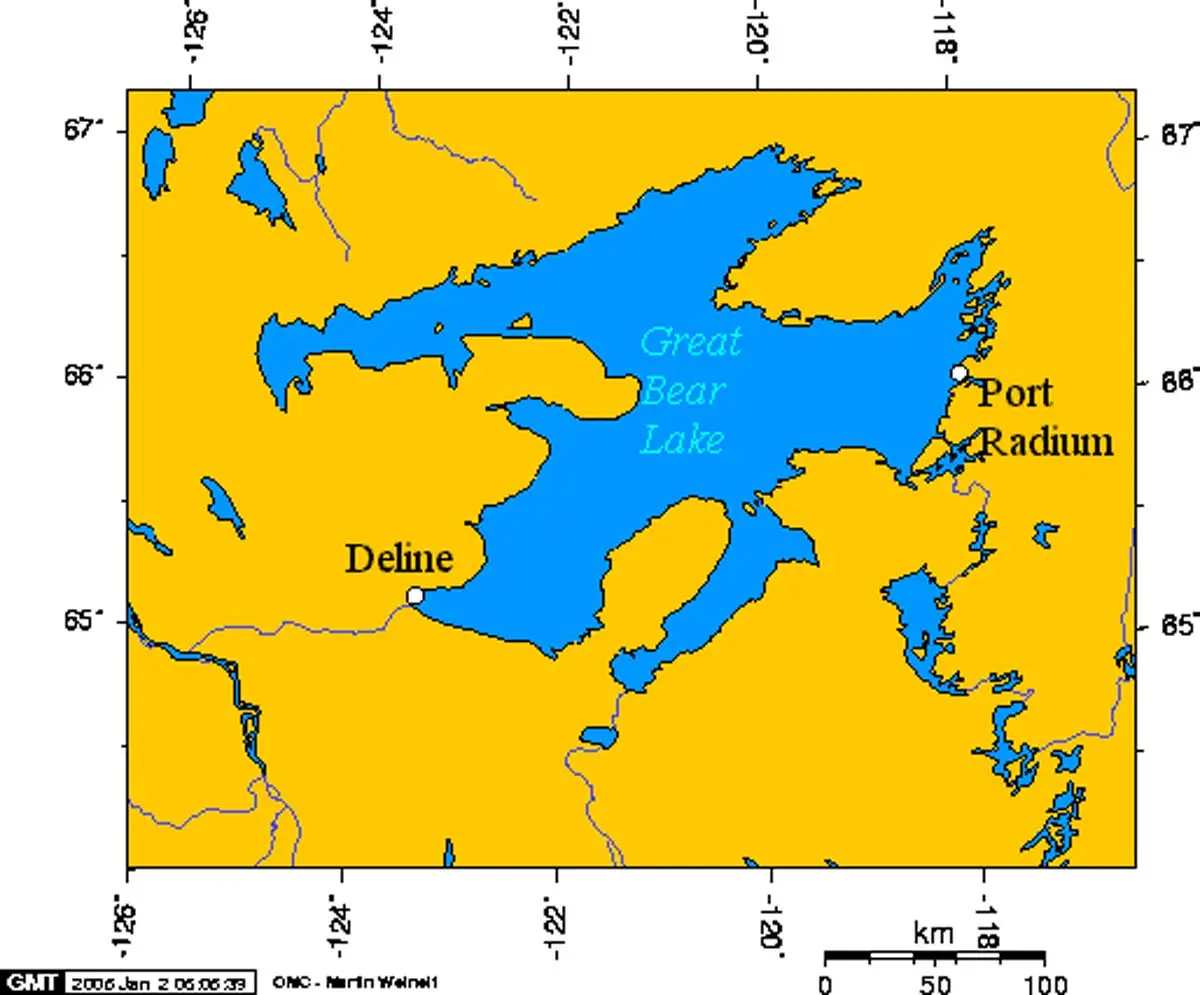
The largest lake to exist entirely within Canadian borders, the Great Bear Lake is positioned right on the Arctic Circle at a height of 156 meters above sea level.
The 31,000 square kilometer lake is frozen solid mostly throughout the year. There are three large cabins around the lake’s 2,719 kilometer shore that are recognized as fishing and hunting spots.
It is not easy to reach here, but a rewarding achievement if you do, because it is not only stunning, but also culturally rich.
The settlements near the lake are home to First Nations, Sahtu Dene folks. You will most probably find a real tipi as well!
9. Lake Malawi
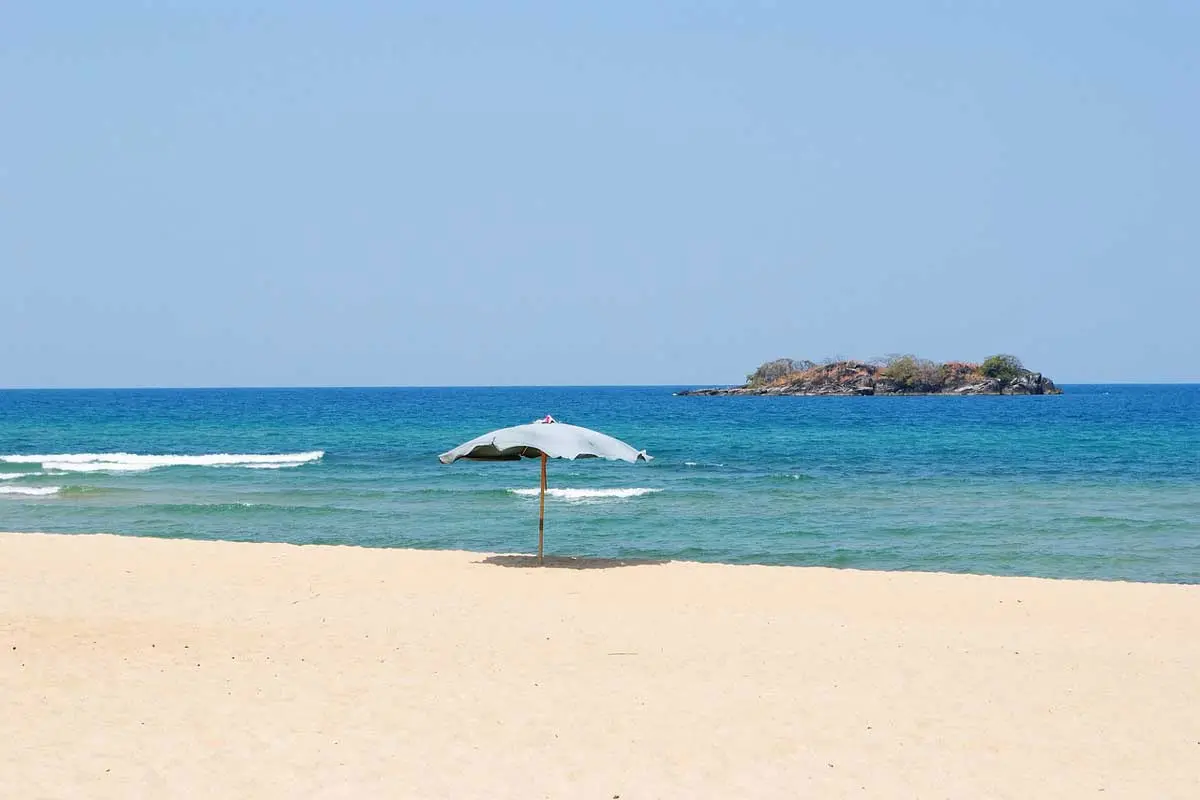
With other names such as Lago Niassa and Lake Nyasa, Lake Malawai is the ninth largest lake in the world and the second deepest lake in Africa.
This African great lake runs along a lot of the eastern boundary of Malawi and has shores in Mozambique and Tanzania both.
Lake Malawi has more biodiversity of fish than any other lake in the world, including at least 700 species of cichlids and plenty of others. It is also a habitat to 28 species of freshwater crustaceans and snails.
The UNESCO World Heritage Site “Lake Malawi National Park” is located at the south of the lake and was built to safeguard the fish and marine habitations of the lake.
There are also some gorgeous beaches beside the lake’s shore and two populated islands that must be visited.
10. Great Slave Lake
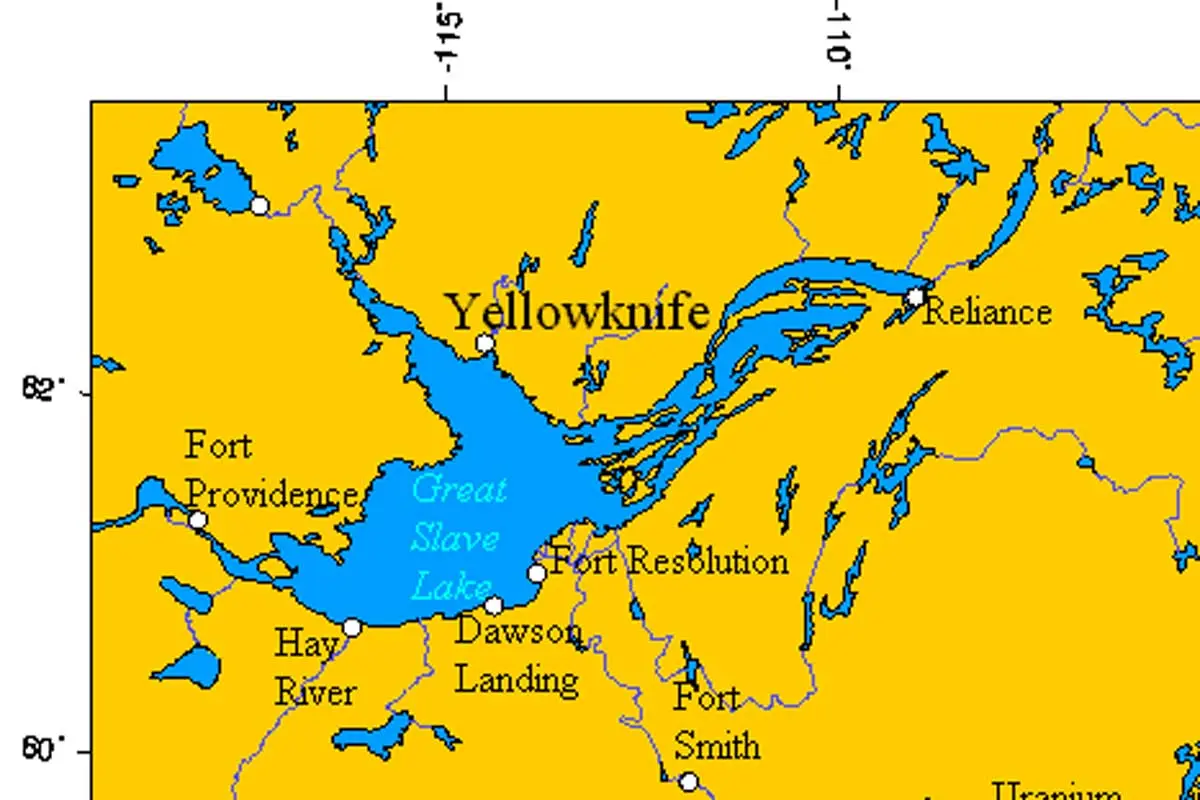
After the Great Bear Lake, the Great Slave Lake is the second-biggest lake in Northwest Territories of Canada.
It is one of the North American great lakes and is part of what once used to be the massive glacial Lake McConnell.
Because of its location, the large lake is frozen eight months of the year. It is renowned for the house-boaters that reside on the boundary of the lake throughout the year and are entirely self-supporting.
There is actually a documentary out there about them (Ice Lake Rebels) that was broadcasted on Animal Planet.
11. Lake Erie
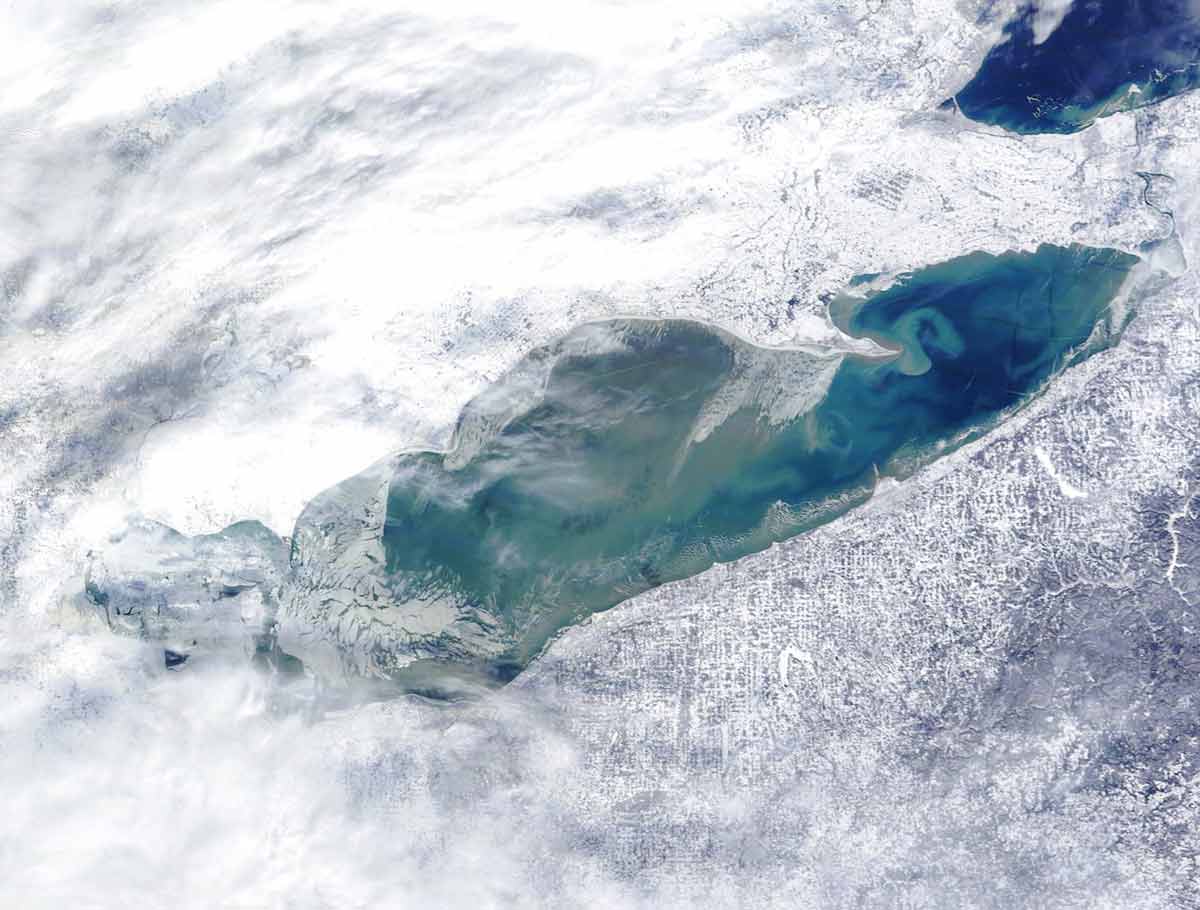
Another lake sitting between the two countries of Canada and USA, Lake Erie is the southern-most lake sharing its borders between Ontario and Pennsylvania, Michigan, Ohio and New York.
The 25,700 square kilometer lake actually flows into the glorious Niagara Falls.
The lake is a common spot for divers, since there are 270 different shipwreck diving spots and many more shipwrecks that are yet to be discovered.
It is also a nice destination for kayaking, swimming and cruises.
There are numerous beaches along the lake in Canada and USA both, in addition to different public parks. Summer lodges and houses surrounding the lake can be rented as well as on some of its islands, like South Bass and Island Kelleys Island.
12. Lake Winnipeg
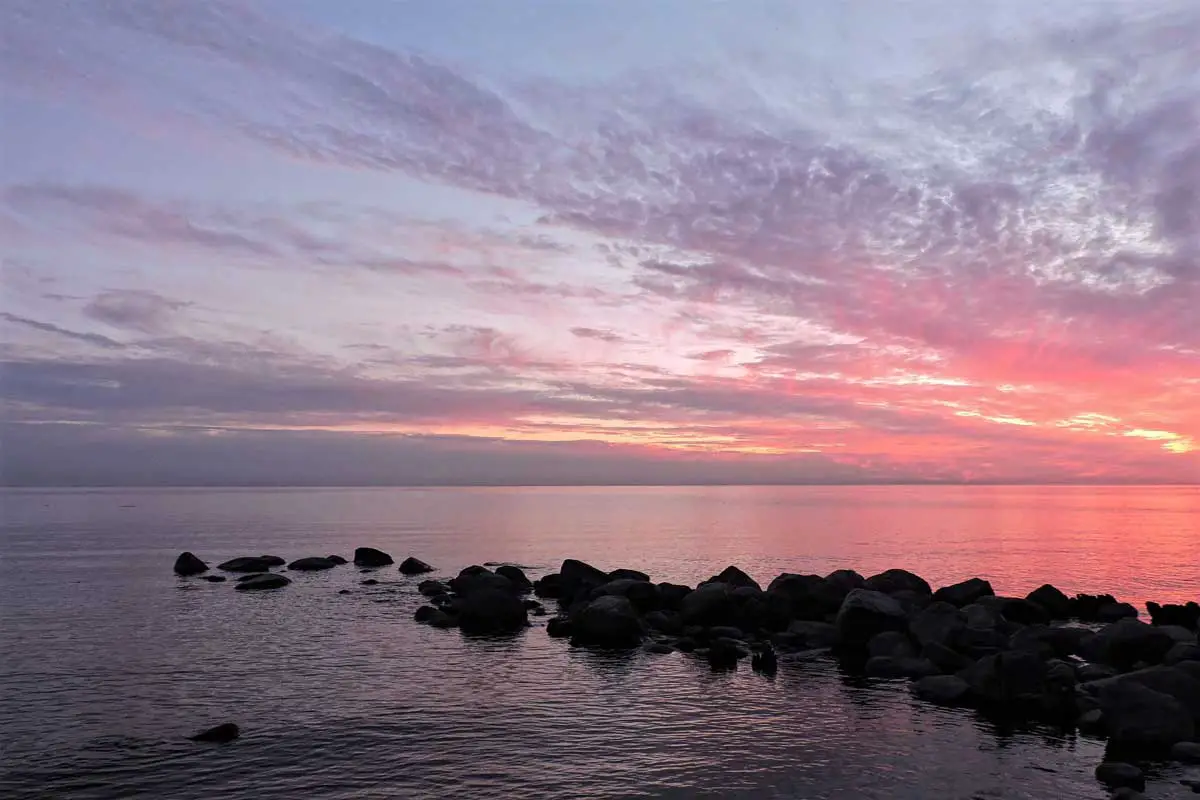
This huge 24,514 square kilometer lake is rather shallow and is found in Southern Canada. The east side of the lake is surrounded by undamaged beauty of boreal forest and rivers, while the other three sides include big limestone cliffs, caves and isolated sandy beaches.
There are also many untouched islands in the lake, one of which has a Sagkeeng First Nation reserve, which is 600 years old.
There are several protected areas here on Lake Winnipeg. These are for the huge number of nomadic birds that gather here, as well as the threatened piping plover.
The lake is also home to two fish species that are threatened; the Bigmouth Buffalo and the Shortjaw Cisco.
13. Lake Ontario
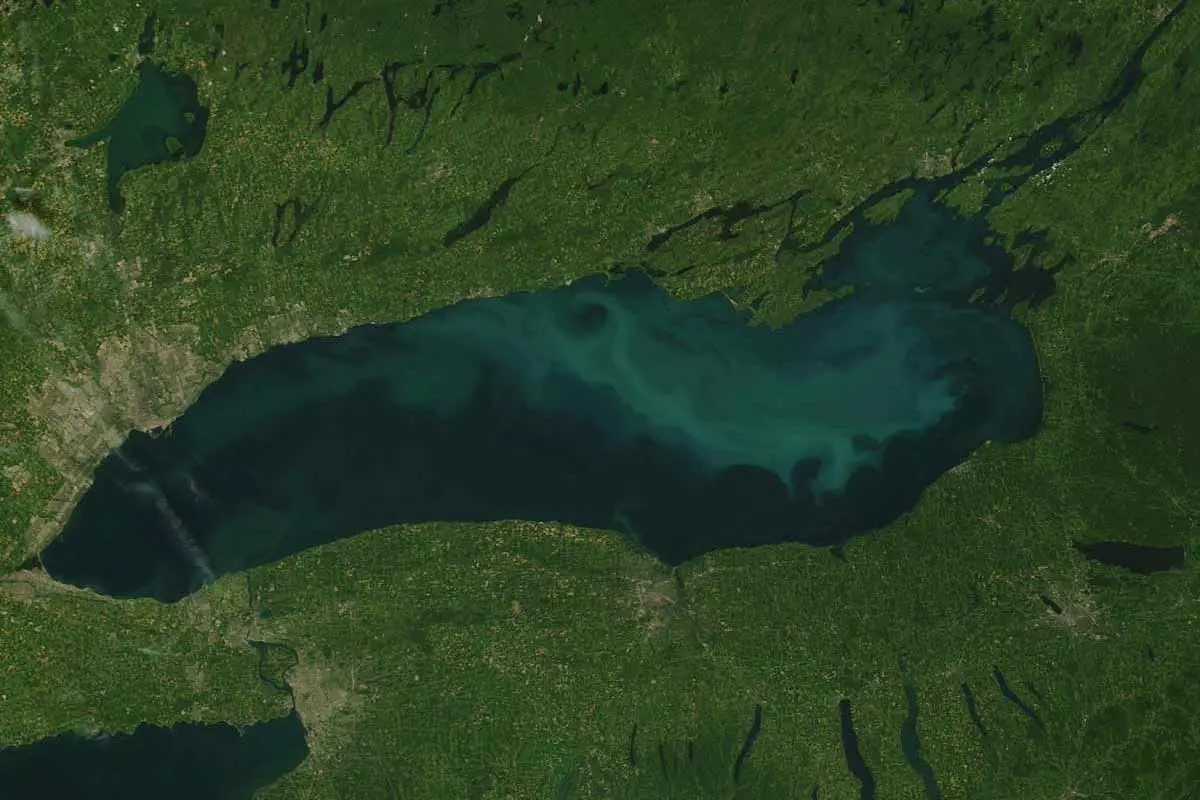
Stretching at 18,960 square kilometers, Lake Ontario is the smallest lake of North America.
Canada’s leading city (Toronto) is located along its west side. Lake Ontario was titled after the Canadian province and is situated within New York too.
There are various beaches and parks beside the lake’s 1,020 kilometer shore. There are similarly several islands inside the lake, majority of which are on the eastern and north-eastern shorelines.
Many people try to swim across the lake between the two nations; only 50 have been successful so far. Another amazing way to observe Lake Ontario is by traveling by car along the Great Lakes Seaway Trail, a US National Scenic Byway.
14. Lake Ladoga
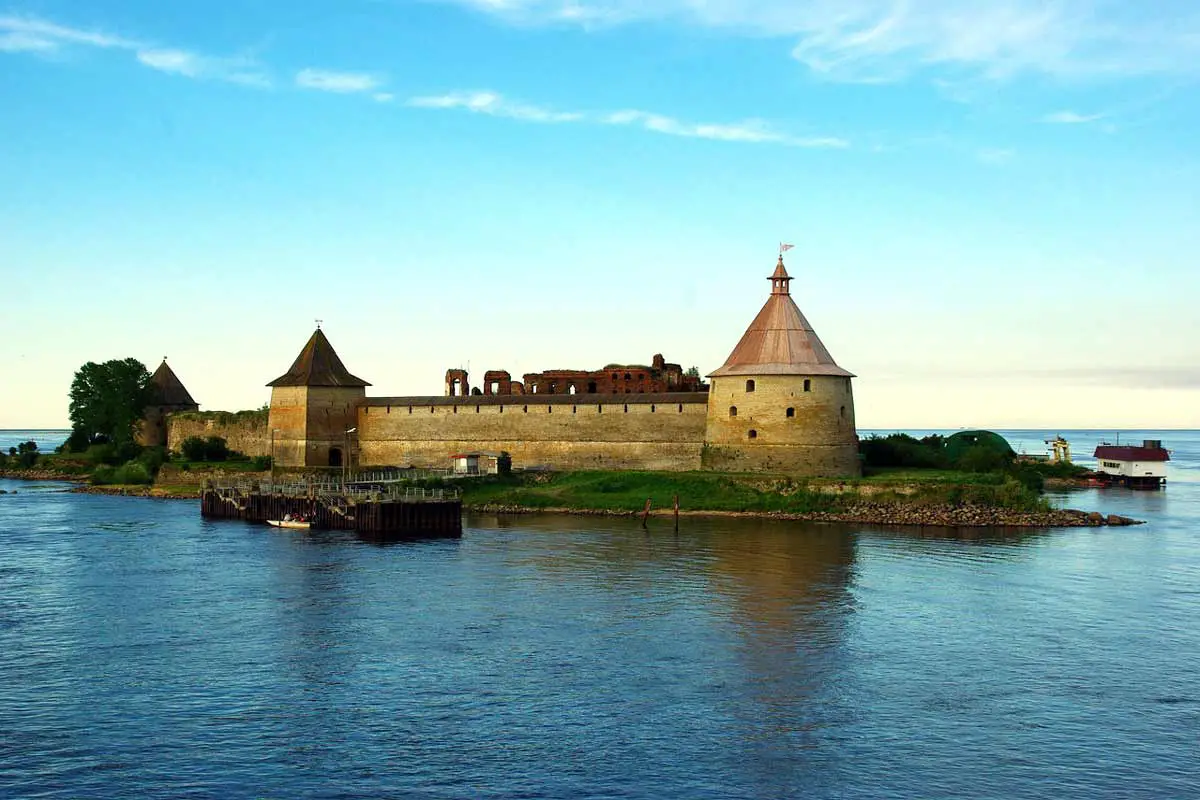
Lake Ladoga is positioned in North-Western Russia and is famous for its well-renowned Valaam archipelago that has over 50 different islands as well as the ancient Valaam Monastery.
Lake Ladoga is totally easy to travel through, being a part of the Volga-Baltic Waterway that links the Baltic Sea and the Volga River.
Historically, it was a significant Varangian trade route.
The freshwater lake is a habitat to around 48 diverse fish species and is a prime destination to go sport fishing. You can go sport-fishing in any one of the scenic towns that sit along the lake’s shoreline.
15. Lake Balkhash
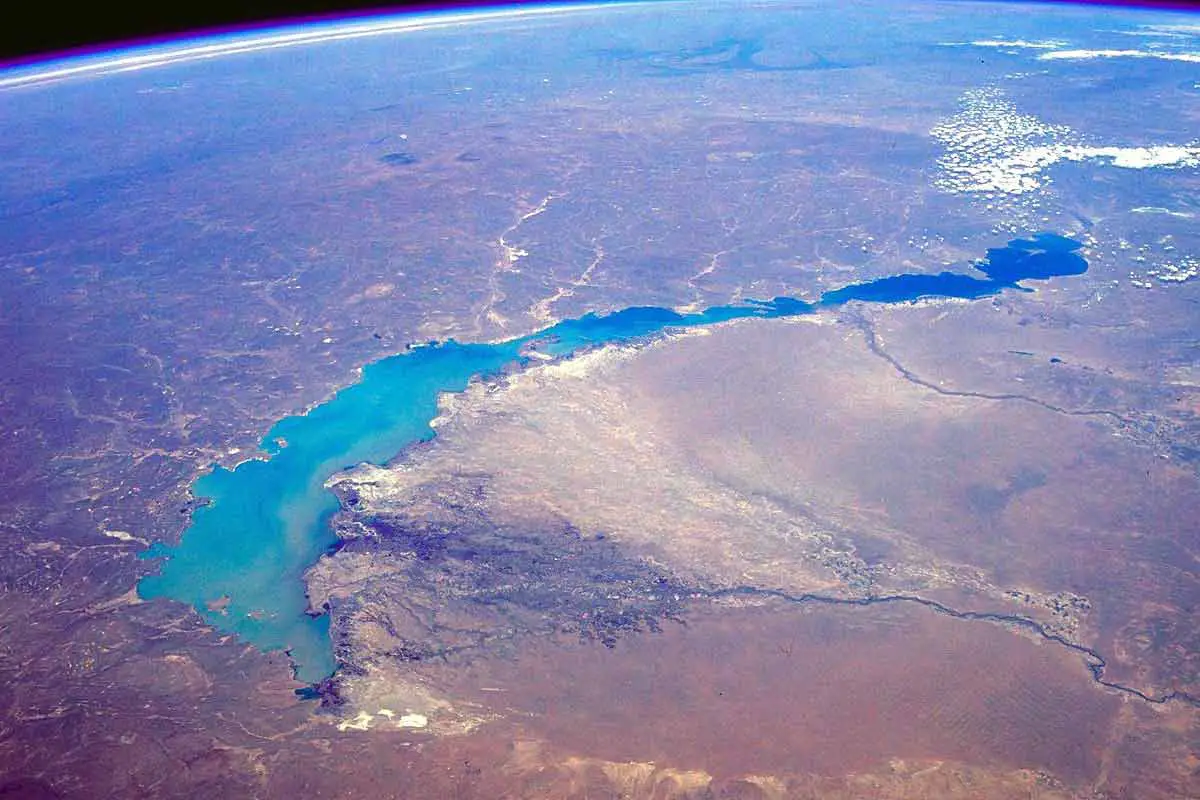
With an expanse of 16,400 square kilometers, Lake Balkhash is one of Asia’s biggest lakes. The lake is located in the deepest part of the Balkhash-Alakol depression and is part of the Dzungarian Alatau Mountains.
Its shoreline is extremely curvy and made up of several bays and coves, besides being home to over 40 islands.
Just over three million people reside around the lake or in the basin, with the biggest city right on its shores – city of Balkhash itself.
There are a few very popular beaches found around the lake (and in the area of Balkhash) that are famous among citizens and visitors both. This is particularly true in summers when people come to cool off in higher temperatures.
16. Lake Vostok
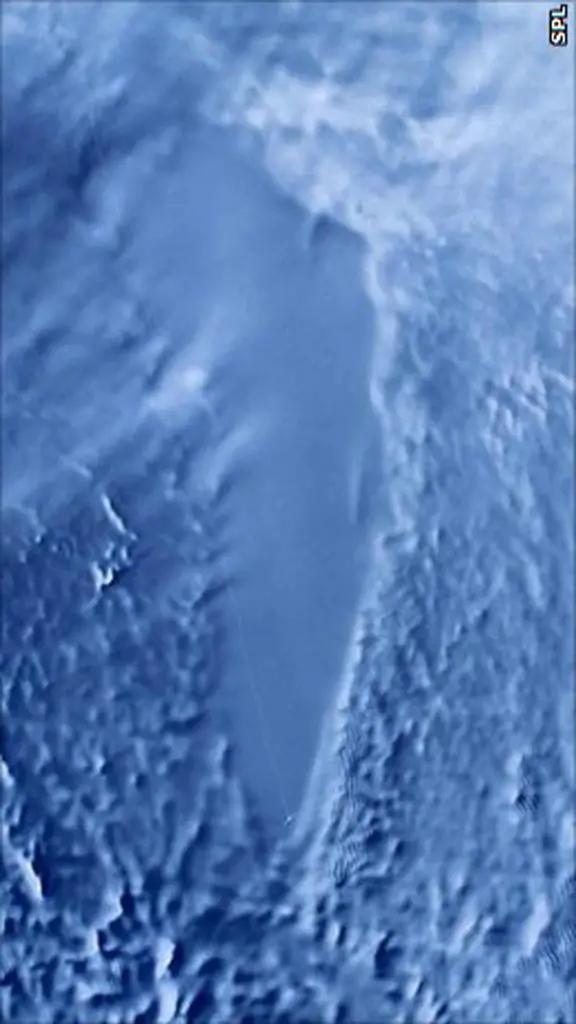
Lake Vostok is the biggest of Antarctica’s nearly 400 identified sub-glacial lakes. It is found at the southern Pole of Cold, below Russia’s Vostok Station, beneath the surface of the central East Antarctic Ice Sheet.
The lake water is thought to have been closed off beneath the dense ice sheet around 15 million years ago. Originally, it was assumed that the original source and content of water had made up the lake since it had been formed.
Later, exploration and studies proposed that the lake’s water is recurrently freezing and is carried away by the movement of the Antarctic ice sheet. The water that moves away is replaced by water melting from different parts of the ice sheet in these high pressure surroundings.
This stemmed an evaluation that the total volume of the lake is substituted every 13,300 years.
17. Lake Onega
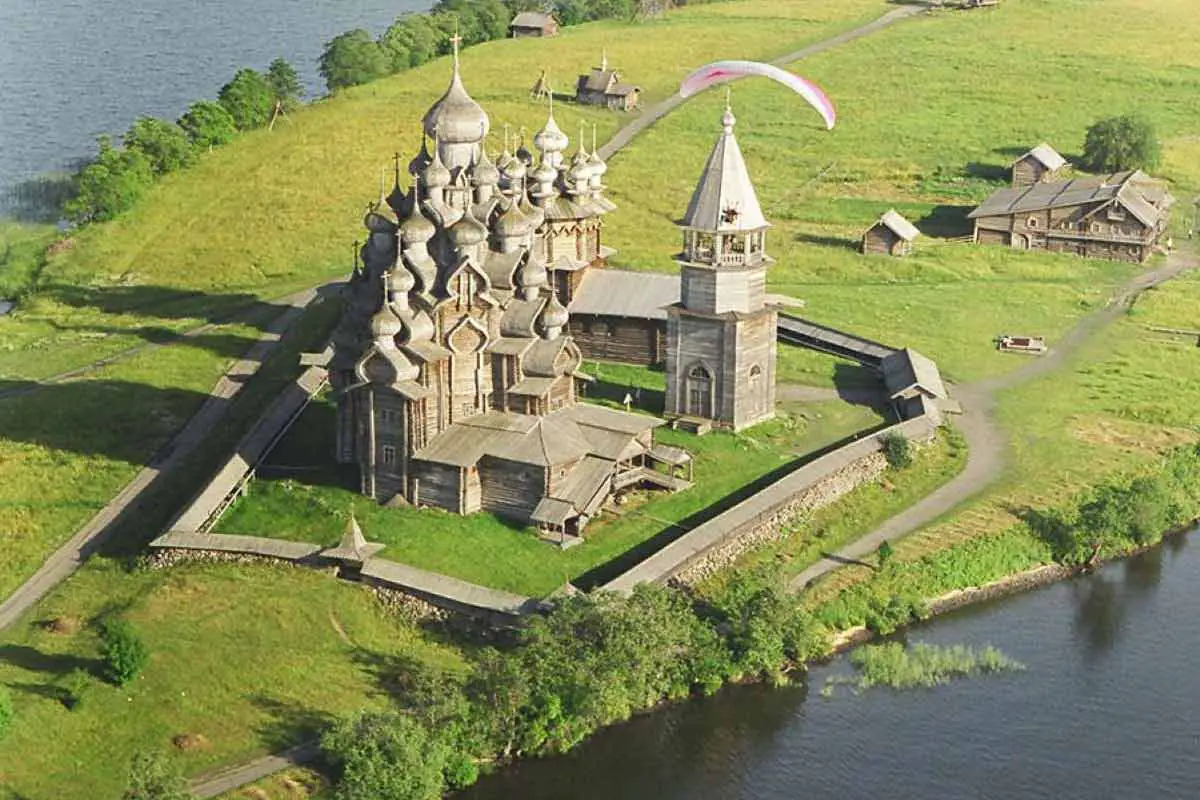
Lake Onega is located in Northwestern Russia, and has its place in the basin of the Baltic Sea. Baltic sea is the second-biggest lake in Europe following Lake Ladoga.
The lake’s source is made up of about 50 rivers and is drained by the Svir.
The lake is home to around 1,650 islands which include Kizhi, a place that has an ancient complex of 89 Orthodox churches and wooden erections from 15th–20th centuries.
The complex comprises a UNESCO World Heritage location, Kizhi Pogost.
The eastern shorelines of the lake are home to about 1,200 petroglyphs (rock carvings) dating back to the 4th–2nd millennia BC.
18. Lake Titicaca
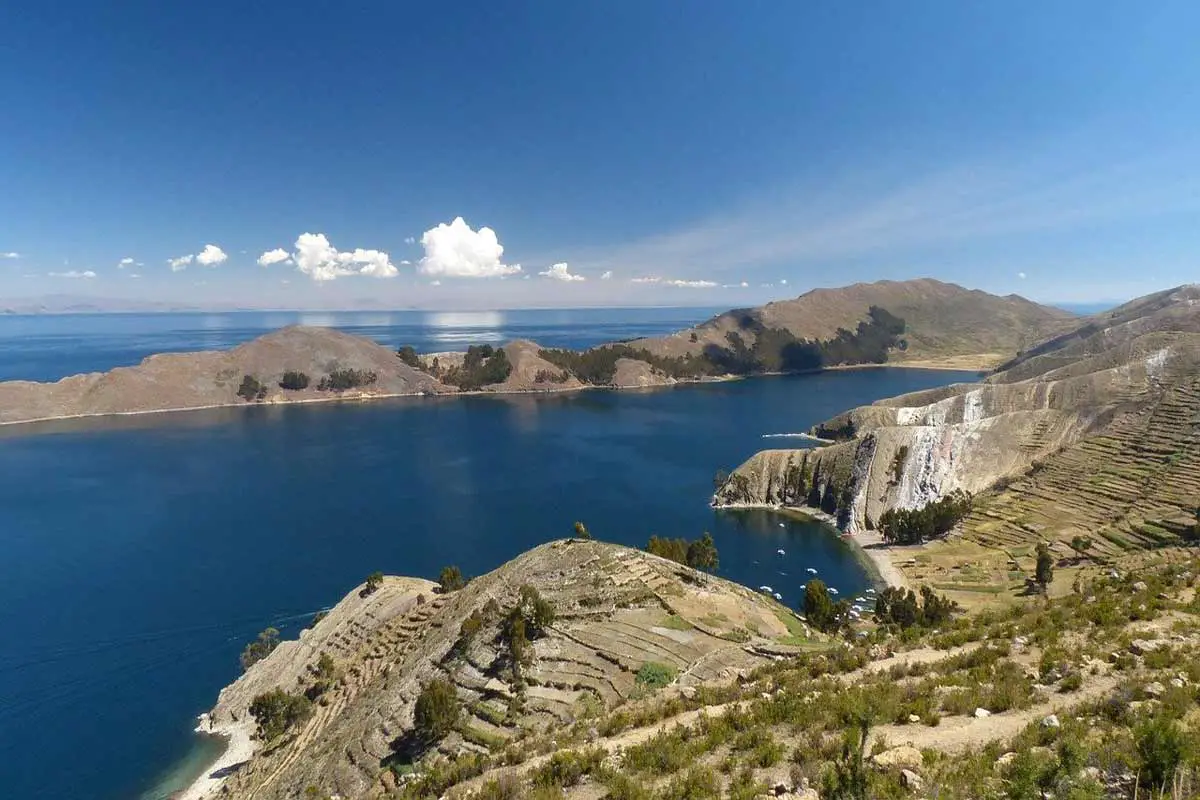
It is a huge, deep, freshwater lake in the Andes, lying on the edge of Bolivia and Peru.
Usually termed the “highest navigable lake” in the world, Lake Titicaca is the largest lake in South America by volume and surface area.
Other communities existed on the lake preceding the coming of the Incas.
In the year 2000, a group of archaeologists and divers from across the globe came across the remnants of an underwater temple. This temple was estimated to be around 1,000 and 1,500 years old, most possibly made by the Tiwanaku people.
19. Lake Nicaragua
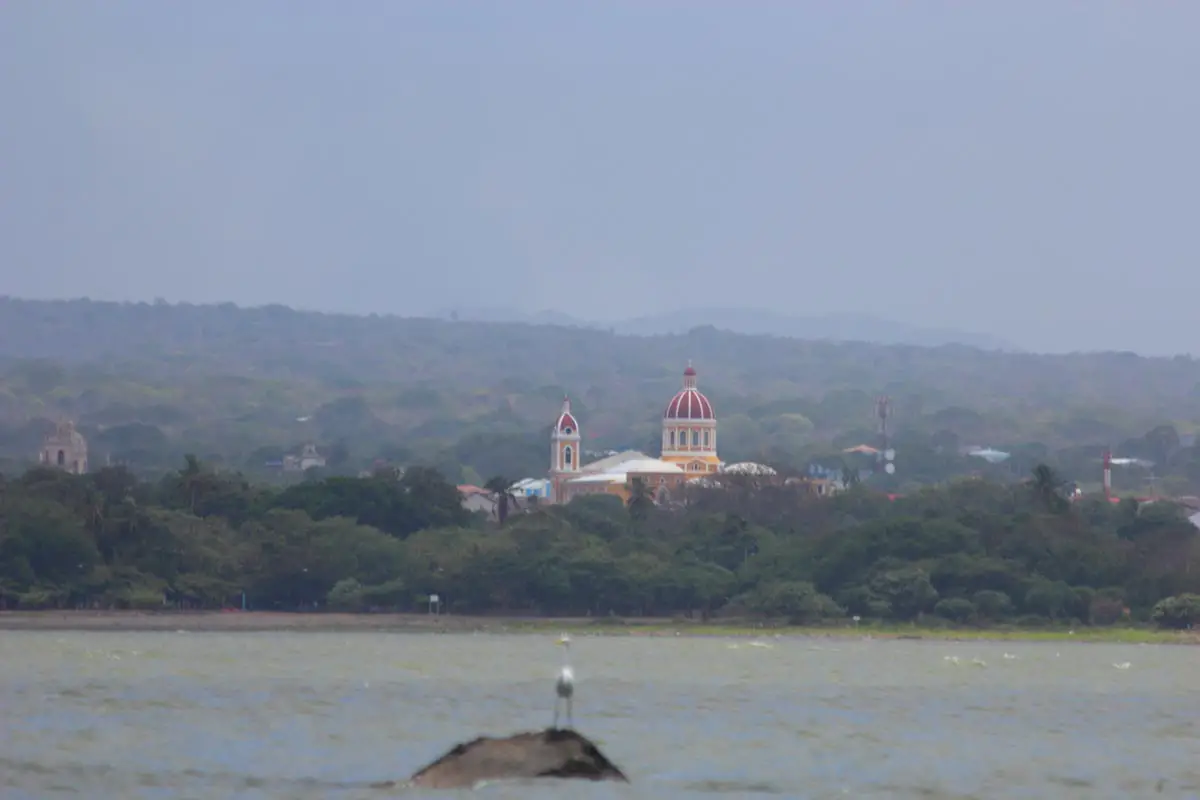
It is also known as Cocibolca or Granada is a freshwater lake in Nicaragua. With tectonic foundations and with a surface area of 8,264 square kilometers, it is the biggest lake in Central America, but smaller than Lake Titicaca.
Elevated at 32.7 meters above sea level, the lake sporadically joins the Tipitapa River to Lake Managua.
Regardless of being a freshwater lake; it is home to tarpon, sawfish, and sharks.
Primarily, experts assumed the sharks in the lake belonged to an indigenous species- the Lake Nicaragua shark.
In 1961, after evaluations of specimens, it was made to be the same as the prevalent bull shark. That shark is also known for entering freshwaters in other parts of the world.
20. Lake Athabasca
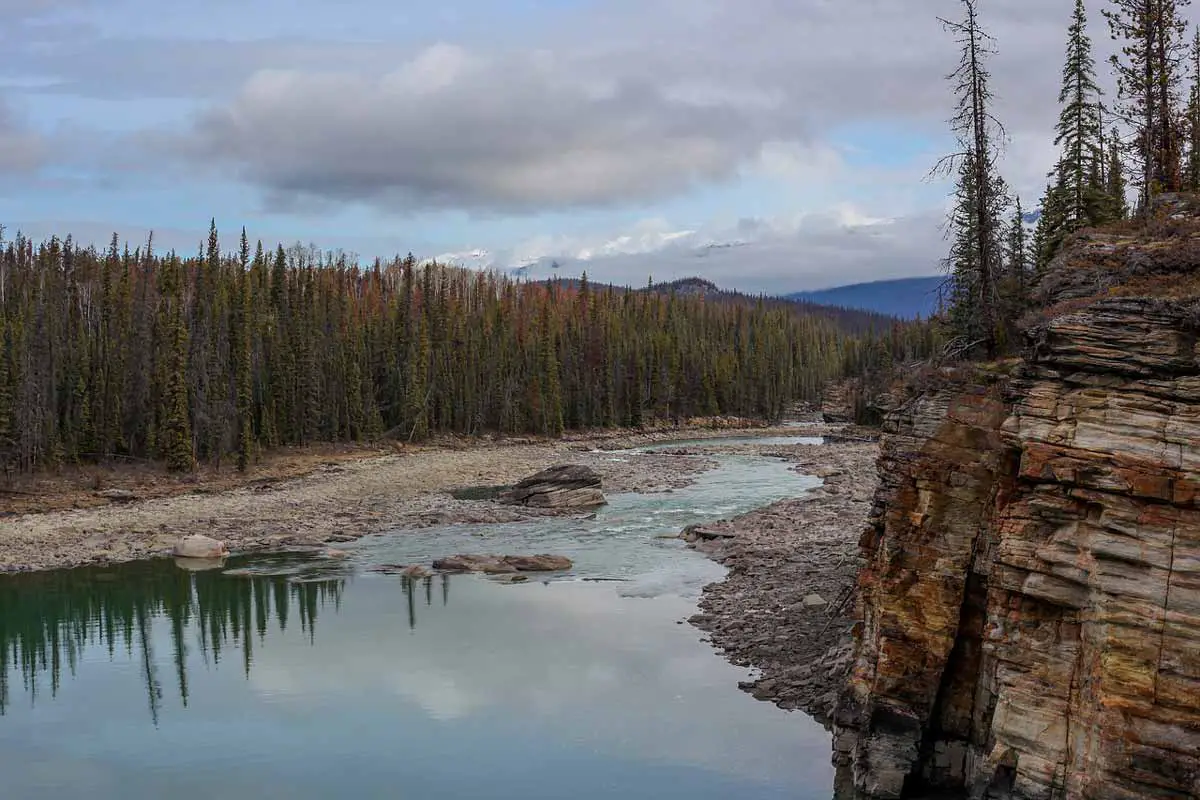
Lake Athabasca is sited in the northwest crook of Saskatchewan and the northeast corner of Alberta, Canada. 26% of the lake is in Alberta and 74% of it is in Saskatchewan.
Uranium and gold mining along the northern shore gave birth to Uranium City, Saskatchewan, which was home to mine laborers and their families.
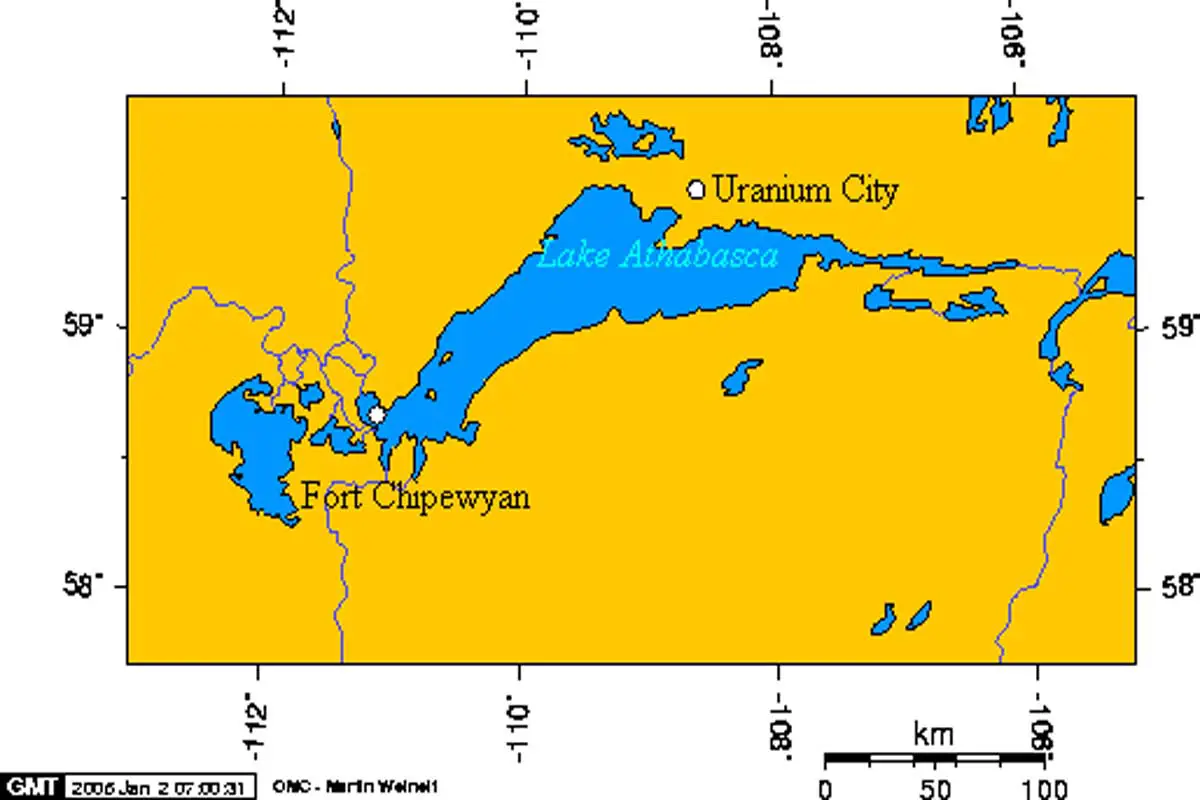
Though the final mine shut down in the 1980s, the consequences of mining activities had by this time profoundly polluted the northern shores.
The big oil sands mining close-by is alleged to have supplemented the current pollution levels in the lake.
Top 25 Largest Lakes Ranked by Volume
Some also like to rank lakes by their volume. Hence, here is the list of top 25 lakes ranked by volume.
- Caspian Sea 78,200 km3 (18,800 cubic miles or cu mi)
- Baikal 23,600 km3 (5,700 cu mi)
- Tanganyika 18,900 km3 (4,500 cu mi)
- Superior 11,600 km3 (2,800 cu mi)
- Malawi 7,725 km3 (1,853 cu mi)
- Vostok 5,400±1,600 km³ (Estimated 1,300 cu mi)
- Michigan 4,920 km3 (1,180 cu mi)
- Huron 3,540 km3 (850 cu mi)
- Victoria 2,700 km3 (650 cu mi)
- Great Bear Lake 2,236 km3 (536 cu mi)
- Issyk-Kul 1,730 km3 (420 cu mi)
- Ontario 1,710 km3 (410 cu mi)
- Great Slave Lake 1,580 km3 (380 cu mi)
- Ladoga 908 km3 (218 cu mi)
- Titicaca 893 km3 (214 cu mi)
- Van 607 km3 (146 cu mi)
- Kivu 569 km3 (137 cu mi)
- Erie 480 km3 (120 cu mi)
- Khövsgöl 480 km3 (120 cu mi)
- Onega 295 km3 (71 cu mi)
- Winnipeg 284 km3 (68 cu mi)
- Nipigon 248 km3 (59 cu mi)
- Toba 240 km3 (58 cu mi)
- Argentino Lake 219.9 km3 (52.8 cu mi)
- Turkana 204 km3 (49 cu mi)
Lake Eyre, an endorheic salt lake in central South Australia covers a total area of 11088 square km. It used to be filled with water, but has now dried up, with only pink algae remaining on its surface.
Covering an area of more than 13,000 square km, Venezuela’s Lake Maracaibo is the largest lake in South America. However, it has become darkened and filled with algae due to oil pollution and contamination.
Largest Lakes in the US
While we’re discussing the largest lakes in the world, my interest brings me to share with you the largest lakes in the US. I’ve covered details about most in the article so we’ll just be listing them out here.
- Lake Michigan
- Lake Superior
- Lake Huron
- Lake Erie
- Lake Ontario
